Intermaxillary fixation on call
I'm sure you're all tired reading about my medical blogs but I'm sorry but this is what my daily routine is all week long. But this is not what I only post, if you take a look at my profile you'll definitely find diversity:')
We stay at the hospital for 32 hours and then take the next day off but in today's blog I'll try to do something different. Reading a diary can get boring sometimes and I don't want this post to be another cliche diary game telling you all how I woke up and did this and did that so in this post I'll share one of the cases I did on my duty which took me around an hour and a half.
Intermaxillary Fixation (IMF) |
|---|
Intermaxillary fixation (IMF), also referred to as mandibulomaxillary fixation, is a surgical technique used to immobilize the mandible (lower jaw) and maxilla (upper jaw) in a fixed position. It is commonly performed for the management of mandibular fractures or maxillofacial injuries to ensure proper alignment and healing. Let's understand it this way that the doctors use wires, screws, or rubber bands connected to the teeth or jawbones. This keeps the broken bones stable so they can heal properly.
It’s often used when someone has a jaw fracture from an accident or injury. Due to this fixation the patients find it significantly hard to talk, eat and to even clean their teeth while the wires are attached in their mouth.
Well how is it done and why did it take me so long to do it on this particular patient?
A 28-year-old patient was admitted to the Maxillofacial Surgery ward with a history of a road traffic accident (RTA) and a fracture of the left mandibular condyle. The first step was to obtain a CT scan and an orthopantomogram (OPG) to confirm and accurately differentiate the fracture.
After the diagnosis was made, we opted for intermaxillary fixation (IMF) as the initial treatment before proceeding with surgery. For the IMF procedure, wires and an arch bar were required. The procedure is straightforward: wires are cut into small pieces and passed between the teeth. For example, a wire is passed from the distal side of a molar, looped around, and then passed through the mesial side. This method ensures all teeth are secured.
In the patient’s upper teeth, the challenge was the presence of very tight contact points, which necessitated passing some wires through the gingiva.
In the mandibular region, the retention of wires was tricky due to the presence of multiple missing teeth. After positioning the wires, the arch bars were inserted on both the upper and lower teeth and secured using the wires.
In this way the patient's jaw is stabilized and we lower down the risks of aggravating the injury even further.
Most of the time on call is consumed by taking vitals of patients, doing rounds, dressings of wounds and of course the influx of numerous RTA patients but that doesn't mean we don't take out some time for ourselves, for example look at this when all of us were playing ludo.
One of the policies I truly appreciate about this hospital is the recent introduction of separate on-call days for male and female doctors. This means that whenever I am on call, all my colleagues are male, which has genuinely made things much easier in many ways—for instance, ensuring privacy, better rest arrangements, and, of course, not spending an hour deciding where to eat, haha. It took us less than two minutes to decide to visit one of the best BBQ restaurants in Karachi for dinner, and honestly, it was worth every single penny. After a hectic day in the ward, we all deserved a good meal.
There's honestly so much more to tell, so many more experiences that are unique to the on-call days, so many other patients but I don't want to bore you all so I'd be ending my blog here. If you had a good read, do let me know :))
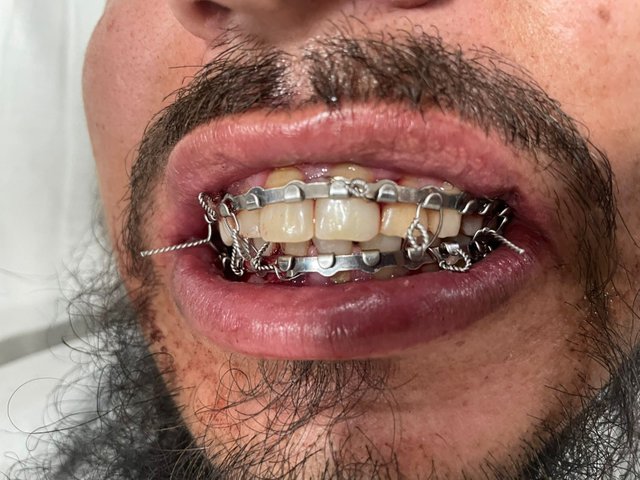
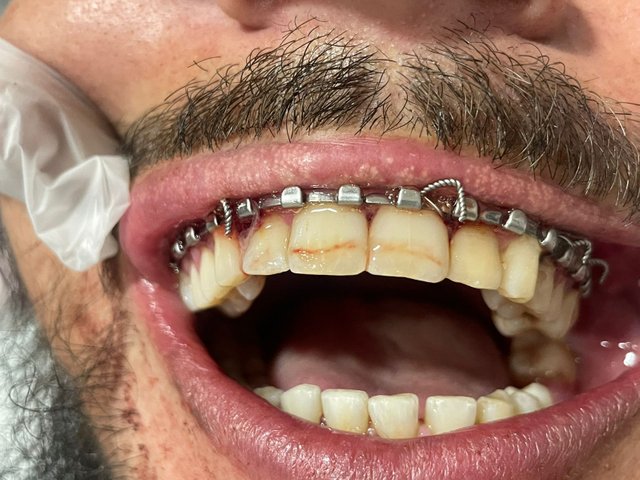
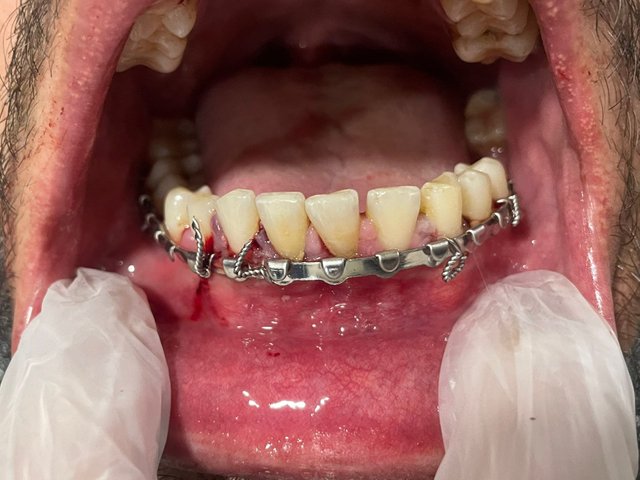
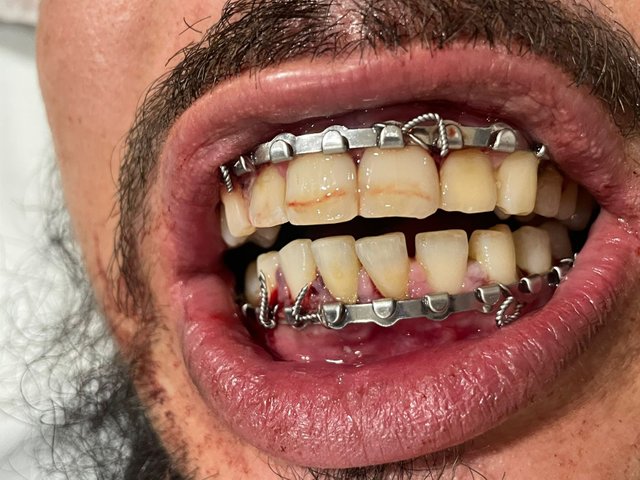
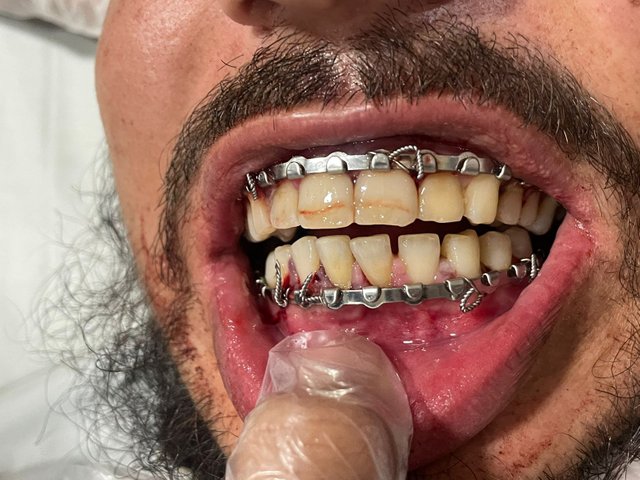
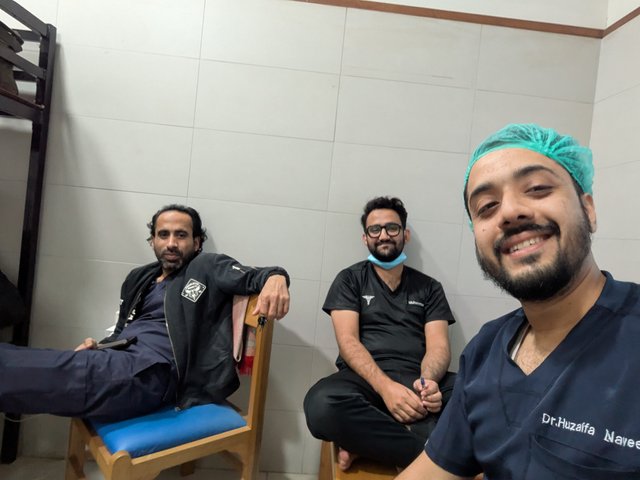
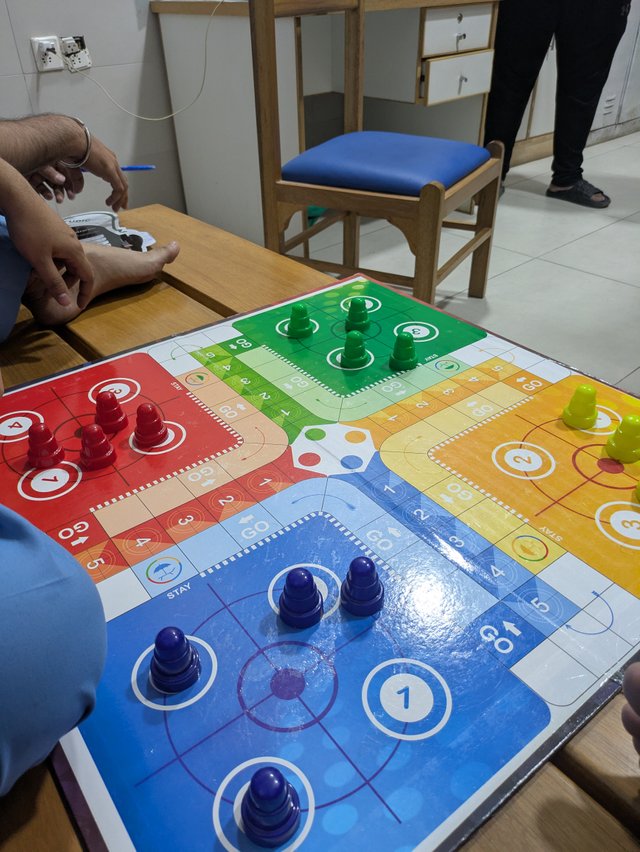


It feels very painful, what do you think, if this happens to us, it really hurts, is there a sleeping pill to put in the wire? Can the patient recover in how many days, sir? 🤝
It indeed is really painful and extremely irritating as well but we have to do it in order to avoid other major issues.
It could take upto 6 months after surgery
That looks more than unpleasant... I've never seen it like that before. The metal parts hurt the gums, don't they...? I imagine inflammation and complications...
It IS unpleasant and quite irritating for the patient as well but this is necessary for the joint stabilization before the surgery. It indeed hurts the gums, causes inflammation and cause hygiene issues as well but all of these things are considered small comparing it to the most important thing and that is to stabilize the fracture before surgery.
Hello Friend,
This is a spellbinding glimpse into the day-to-day life of a healing professional! Sharing your occurrence accompanying Intermaxillary Fixation (IMF) determines valuable insights into a complex process that most folk don’t adequately understand. Your consideration to detail, from disease to beating challenges like close contact points and missing dentition, climaxes your ability and devotion. It’s also rousing to visualize by what method you blend diversity into your site content in spite of your active routine.
Your exertions to make healing information approachable and engaging are praiseworthy, and I’m certain many proofreaders, containing myself, appreciate education about the complications of your work. Keep giving—it’s educational and inspiring!
Hello friend,
Thank you for these nice words but it seems you generated this comment through AI. Is that so?
I enjoyed reading your post and would love to see more of these medical related content in the nearest future.
You explained the process in a simple and easy way that a non-professional like myself could easily following.
I'd like to know though, what happens if a medical emergency occurs and it needs the expertise of a particular doctor and it turns out that this doctor is actually a female or male and not on seat due to the recent policy?
I would like to know how your hospital is manned and how they can manage the hypothetical situation presented above.
Thank you ukpono I'm truly humbled.
In such a scenario the doctor would be called on emergency basis and the said doctor would manage the case to the best of their capabilities. If the on-call duty is for males on that particular day and the doctor in question is a female, she won't be spending the night and would leave after managing the case.
Okay, I understand this.
Thank you for explaining this.
I feel the pain on my gums upon seeing the pics.